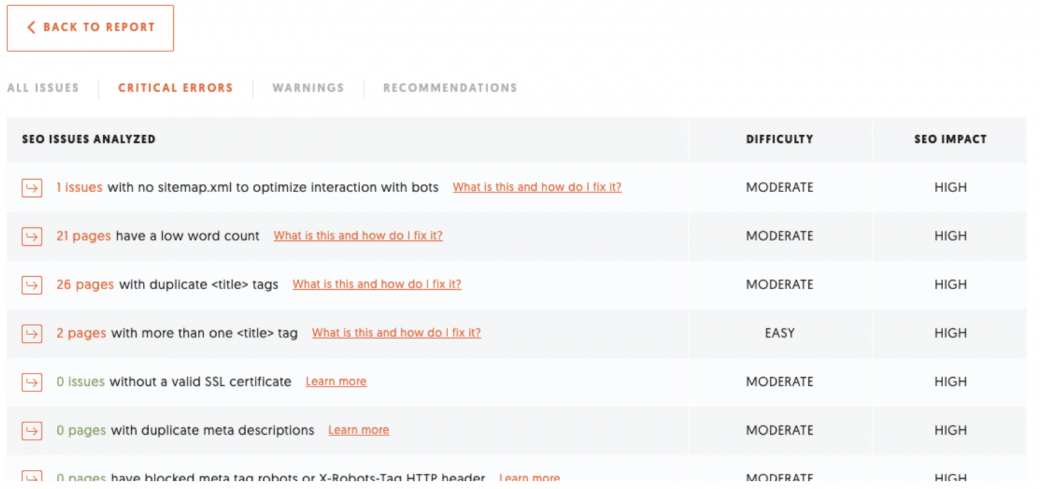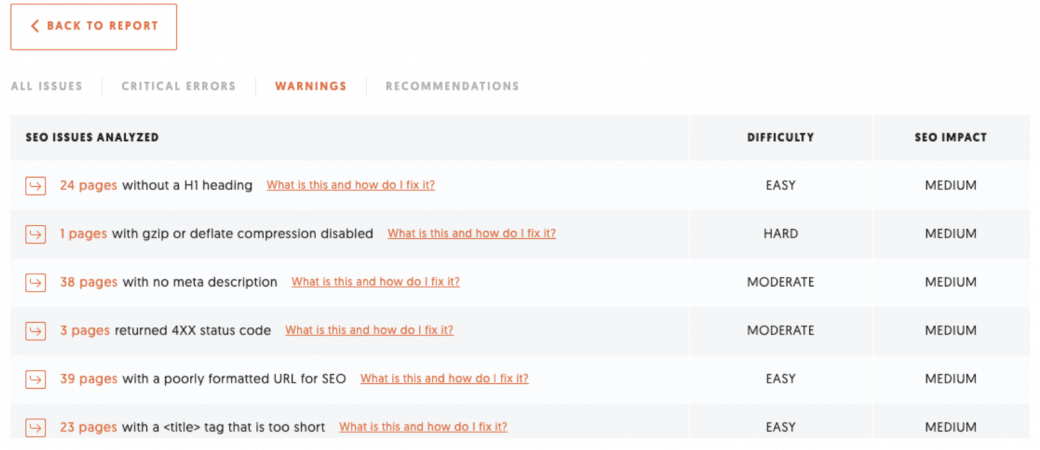What You Need to Know About On-Site SEO
You can’t downplay the value of on-site SEO in 2024. Even if you manage to build truckloads of backlinks to your website, your SEO efforts won’t be nearly as fruitful if your on-site (or on-page) SEO isn’t spot on.
That’s why you need to be mindful of the elements on your website. If your website isn’t optimized, the search engines won’t understand what your pages are about, causing them to give your pages poor ranking on the search engine results pages (SERPs).
What is on-site SEO
From a 30,000-ft. perspective, on-site SEO is all about optimizing the elements in your website for the search engines and the internet users so it ranks high on the SERPs.
Whatever measures you can take within your website to improve its ranking on the SERPs is considered on-site SEO.
On-site SEO best practices
While there are hundreds of ranking factors that Google checks to determine how authoritative or “rank-worthy” a website is, we’ll look into some of the best practices to improve your website’s SEO.
Keyword research. Look for highly relevant keywords with a decent amount of monthly search queries but with low competition. (Continue reading below. We’ll share a tool to help you uncover these keywords.)
Keyword placement. Where you place your keywords is very important to help the search engines understand your web pages. For the most part, you need to add your keywords on your meta tags (title and description), subheadings (e.g., H1, H2, H3, etc.), your image file names before uploading them to your site, etc.
Page content. Put a premium on publishing quality content. Publish something your readers will love yet Google also finds relevant — you can accomplish the latter with proper keyword insertion. Also, make sure your content isn’t thin. Give it a decent length. According to SERP IQ, the average length of the top 10 pages ranking in Google’s search results has about 2,000 words.
Mobile-friendliness. Because of Google’s Mobile-first update back in 2016, they now look at the website’s compatibility with mobile devices as a major ranking factor. To make the long story short, your chances of ranking your pages aren’t good if your website isn’t mobile-friendly.
Website load speed. Just like most internet users, I’m guessing that you hate waiting a couple of seconds before a web page fully loads. If you and the other users feel that way (me included), you can bet Google caught on that. That’s why if your pages load slow, your ability to rank your pages is severely hampered.
How to get it done with Ubersuggest
Here’s the deal: knowing the things you must do to improve your on-site SEO is important, but putting that knowledge into practice is tough as nails without the help of a reliable SEO tool.
That’s why we’ll talk about Ubersuggest, a freemium SEO tool that’s packed with SEO features to help marketers and website owners rank their pages on the SERPs.
Among Ubersuggest’s key features, its Site Audit or analyzer feature can give you tons of useful insights about the state of your on-site SEO. If you click the Site Audit link on their main navigation bar and enter your website in the search box, Ubersuggest will analyze your website and get back to you with a report that contains crucial SEO data.
I typed in “Amazon.com” as an example and this is what Ubersuggest came back with.

Awesome, isn’t it.
It gives you an overview of your website stats. It assigns an on-page SEO score, it gives you an estimate of organic monthly traffic, organic keywords that are ranking, and backlinks, etc.
If you scroll further, you’ll see more info like this.

To get more info about the errors, warnings, and recommendations, click the “View All” link. I clicked the one for Critical Errors and this is what the tool came back with:

It’s amazing how Ubersuggeest can detail these SEO critical errors. It even tells you the difficulty level of fixing the error and how huge of an impact the error has on your on-site SEO.
With the Site Audit feature alone, you can determine what you did wrong on your website so you can fix it and have your site ready and puckered up for the search engines.
For example, remember the keyword placement bit that we talked about earlier? How you need your keywords added in critical places? I clicked the Warnings tab and saw Ubersuggest pointing out a warning on the keyword placement.

The warning showed that some of the pages had no H1 heading and no meta description. It even lists at the bottom that one of the page title tags is too short.
It can be hard tracking your on-site SEO especially if you have thousands of pages. But with an SEO tool like Ubersuggest, you don’t need to comb through every single page manually to know if they’re optimized for the search engines. Just enter your site in Ubersuggest’s search box and it’ll tell you if something’s up with your on-site SEO.
Other Ubersuggest features:
- Keyword ideas. This feature shows variations or relevant suggestions to the seed keyword you’ll type in on Ubersuggest’s search box. It also shows data about keyword ideas such as their monthly search results, ranking difficulty, etc. Marketers use this feature to uncover keywords with a good level of traffic with fewer competitors.
- Content ideas. This feature shows you several pages published online based on your search query. It shows the number of engagements the pages had, allowing you to validate if the topic is interesting enough for your readers, or not.
- Traffic analyzer. This tool has several applications but a lot of marketers use this to do competitor research. If you type in your competitors’ website, you’ll see an estimate of their monthly traffic, their top pages, the keywords they’re ranking for, etc. With these details, you can learn from your competitors and continue to develop your SEO campaigns.
What’s next?
While the points we covered in this guide is by no means complete, rest assured they’re “deadly” enough to make a huge dent in your SEO campaigns.
Take the time to implement the tips we shared and you’ll gain an unfair advantage over your competitors who are not optimizing their websites for the search engines, putting you in a better position to rank your pages.


